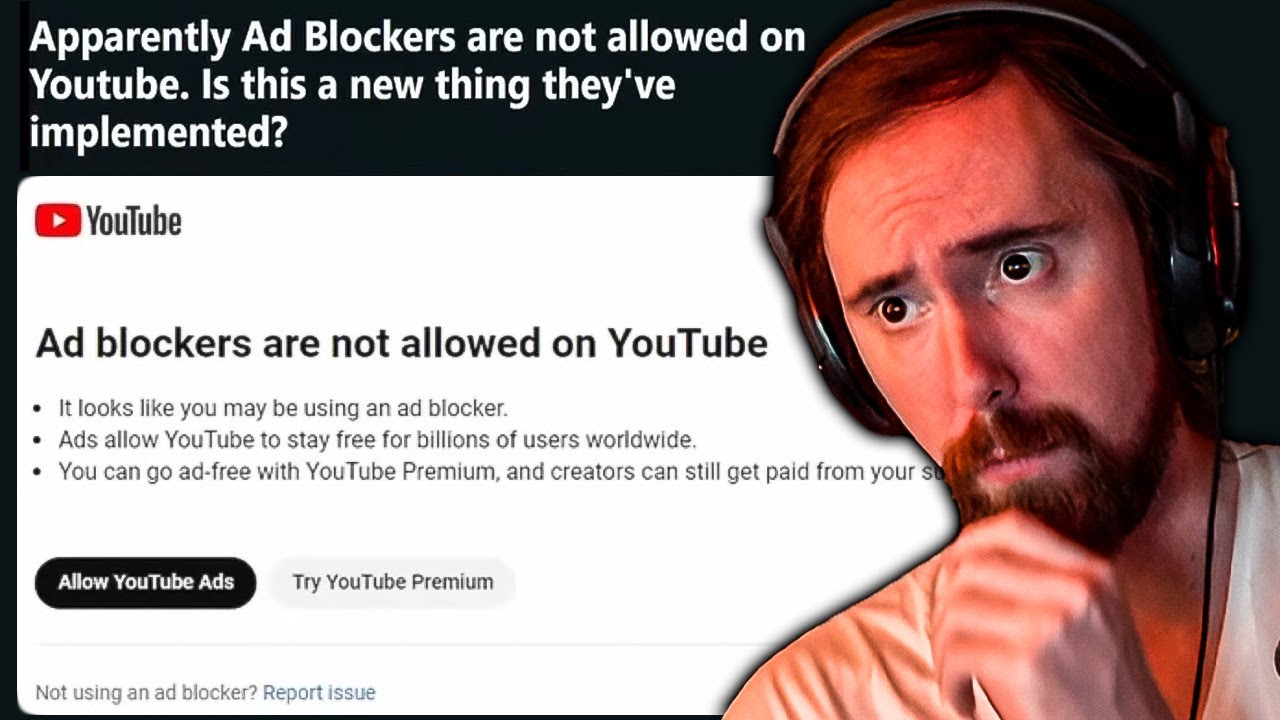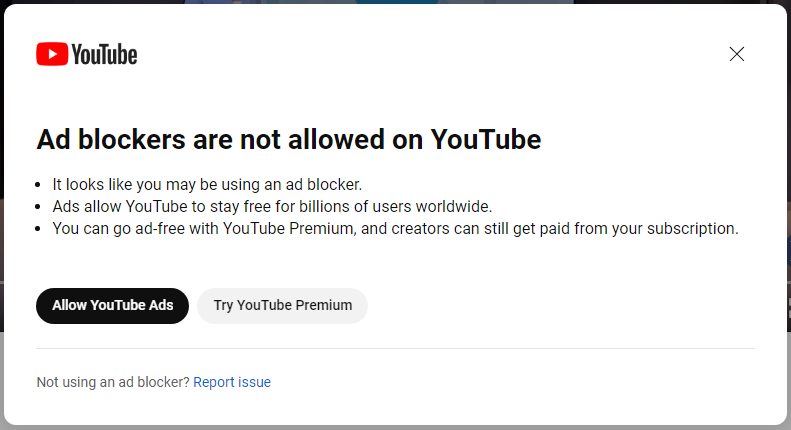Have you ever wondered how YouTube manages to keep its content free while still supporting creators? The answer lies in advertising—and the battle against adblockers. In this post, we'll dive into how YouTube detects these pesky adblockers and explore the impact this has on viewer engagement. Understanding this relationship is crucial for both content creators and viewers who want to get the most out of their
Understanding Adblockers

Adblockers are browser extensions or software designed to block advertisements from appearing on web pages, making for a cleaner and less distracting browsing experience. But how do they work? Let's break it down:
- Filtering: Adblockers use a set of rules and filters that identify advertising elements on a page, including scripts, images, and frames. When you visit a site, these tools analyze the content and block anything that appears to be an ad.
- Whitelist: Users can often whitelist certain domains, which means ads will still show up on those specific sites. Many people choose to whitelist YouTube because they appreciate creators and the content they produce.
- Browser Compatibility: Adblockers can be integrated into various web browsers, making them accessible for most users. Popular options include Adblock Plus, uBlock Origin, and Ghostery.
- User Experience: By blocking ads, users usually enjoy faster page-load times and an uninterrupted viewing experience, which are significant advantages in today's fast-paced digital world.
However, while adblockers certainly enhance the viewing experience for individuals, they present a challenge for platforms like YouTube and the content creators who depend on advertising revenue. This complex relationship between adblockers and streaming platforms is pivotal in understanding viewer engagement today. Stay tuned, as we explore how YouTube combats adblockers and the wider implications this has for user interaction.
YouTube's Approach to Adblock Detection

YouTube employs a multi-faceted approach to detect adblockers and mitigate their impact on advertising revenue. No magic wand here—just sophisticated technology that calls back to a set of defined criteria and user behaviors. Here’s how they do it:
- JavaScript Monitoring: YouTube utilizes JavaScript codes to check if ads are being blocked when the page is loaded. If an Adblocker is active, these scripts won’t load correctly, alerting YouTube.
- Client-Side Detection: This involves analyzing the behavior of the user's browser. For instance, any user actions that show ads being skipped or dismissed will likely trigger detection protocols.
- Browser Fingerprinting: Some platforms might pair the detection techniques they use with browser fingerprinting, which collects certain non-personally identifiable information about the user’s device. This method helps to build a profile that might indicate adblock usage.
- Feedback Loops: YouTube continuously updates its methods based on user engagement data. If ad views drop dramatically in specific regions or demographics, adjustments are made to the detection systems.
Ultimately, the goal is not just to identify the presence of adblockers, but also to encourage users to switch them off. This might lead to ads tailored to their interests rather than interruptive commercial breaks. So, the next time you hop onto YouTube, know that the platform is proactively ensuring that creators can keep bringing amazing content to your screen!
Viewer Engagement Policies Explained

YouTube recognizes that maintaining a balance between user experience and monetization strategies is crucial. Their viewer engagement policies are designed to foster a community that values both content creators and advertisers. Let’s delve into how this works:
- Viewer Experience First: YouTube aims to create an enjoyable viewing experience. This is why excessive or irrelevant ads can lead to viewer frustration. The platform often takes feedback into account when establishing guidelines regarding how often ads can interrupt viewing.
- Ad Frequency Controls: YouTube has specific limits on how many ads may be shown to users during a single video or across a viewing session. This is done to reduce "ad fatigue," ensuring that users remain engaged rather than overwhelmed.
- Quality Over Quantity: The platform leverages viewer engagement analytics to determine which ads are performing well with particular demographics and adjusts accordingly. This means tailored ads are more likely to be seen.
- Community Guidelines: YouTube enforces policies to ensure that ads don’t disrupt the community vibe. Ads must align with content policies, meaning inappropriate or misleading ads are kept to a minimum.
In essence, these policies create a foundational layer for a seamless user experience while ensuring that creators and advertisers can still thrive. This delicate balancing act is what keeps viewers glued to their screens and helps YouTube maintain its status as a legendary content platform.
The Consequences of Using Adblockers on YouTube
Using adblockers on YouTube can feel like a sweet deal—streaming videos without those pesky ads interrupting your viewing experience. However, there are some unintended consequences that come along with this convenient choice. Let’s dive into what happens when you choose to block ads on this popular platform.
1. Impact on Revenue: The primary consequence of using an adblocker is the effect it has on YouTube's revenue model. YouTube generates a significant portion of its revenue from advertisements. When viewers block ads, creators and the platform itself lose out on essential income, which can influence the quality and quantity of future content.
2. Availability of Content: Many creators rely on ad revenue to fund their channels. If adblocker usage becomes widespread, some creators might choose to either limit content availability or even consider leaving the platform altogether. This could lead to fewer options for viewers in terms of content diversity.
3. Viewer Experience: If adblocker usage escalates, YouTube may respond by changing its content delivery model. This could mean more sponsorships, paid content, or even exclusive deals with certain creators. You may see less organic, unpaid content that previously thrived on the platform.
4. Ethical Considerations: Many creators put in immense effort to produce high-quality content. While skipping ads can feel justified, it’s crucial to consider the ethical implications of depriving these hard-working individuals of their rightful compensation.
So, while adblockers might enhance your immediate viewing experience, the potential repercussions on the platform and its creators are worth pondering.
How Content Creators Are Affected
Content creators on YouTube have a unique relationship with their audience—and that relationship is profoundly affected by adblockers. Let’s unpack how adblock use impacts these passionate individuals who pour their hearts into creating engaging material.
1. Financial Strain: Content creators often rely heavily on ad revenue as their primary income source. With increasing adblocker usage, their earnings can take a hit. Many creators invest in high-quality equipment, software, and even staff to enhance their content creation, and reduced revenue can jeopardize their ability to maintain these standards.
2. Content Sustainability: Without sufficient income, some creators may feel pressured to reduce their output, pivot to sponsored content, or, in the worst-case scenario, abandon their channel entirely. This dramatically influences their content sustainability and limits the variety viewers enjoy.
3. Viewer-Content Creator Relationship: When viewers have adblockers active, it can create an unconscious disconnect between them and the creators. Many creators depend on their community’s support, and by bypassing ads, viewers may inadvertently undermine this support system. Creators often foster a sense of belonging through their content, and this relationship can be strained.
4. Motivation and Morale: The visibility of adblocker usage can discourage new and aspiring creators. Seeing successful creators struggle with monetization can reduce the motivation for newcomers to enter the platform, potentially stifling creativity and innovation over time.
So, while it’s tempting to click that adblocker button, understanding how it uniquely affects creators can foster a more supportive environment and encourage a healthier YouTube ecosystem for everyone.
Alternative Solutions for Users and YouTube
While ad blockers have their place, both users and YouTube can explore some alternative solutions that enhance the viewing experience without sacrificing revenue. Let's dive into a few options that work for everyone.
- YouTube Premium: This is perhaps the most straightforward solution. Users can subscribe to YouTube Premium, which allows them to watch content ad-free, enjoy exclusive content, and even download videos for offline viewing. It’s a win-win: users get uninterrupted access, and YouTube secures a steady stream of revenue.
- Content Creators' Incentives: Viewers can directly support creators through memberships, donations, or merchandise purchases. By funding their favorite creators, viewers can help reduce reliance on ad revenue.
- Ad-Friendly Content: Users who dislike intrusive ads can choose to watch channels that are known for fewer or shorter ads. YouTube also promotes creator content that is less reliant on advertising through sponsorships and partnerships.
- Feedback and Settings: Users can provide feedback to YouTube about their ad experiences, allowing the platform to improve ad targeting and frequency. Fine-tuning ad preferences can enhance viewer satisfaction.
- Ad Adjustments: Users sometimes have the option to adjust their ad settings. They can often choose to see fewer ads or even take breaks between ad showings, creating a balance that keeps the content engaging.
By exploring these alternatives, users can continue to enjoy YouTube while supporting the creators they love and ensuring YouTube remains financially viable.
Conclusion
As we’ve discussed, the relationship between YouTube and ad blockers isn't just a simple tug-of-war; it's a complex interplay of viewer preferences and platform needs. Ad blockers have become popular for a reason—many viewers are tired of being bombarded by advertisements that disrupt their enjoyment. However, YouTube’s response has been one of adaptation, constantly developing strategies to detect these blockers and implement consequential measures.
Ultimately, the effectiveness of ad blockers not only alters the viewing experience for users but also impacts how creators monetize their content. Viewers need to balance their desire for ad-free experiences with the reality that creators rely on ad revenue to produce quality content. The alternative solutions discussed, such as YouTube Premium or directly supporting creators, showcase proactive ways to maintain harmony within this ecosystem.
As we move forward, both users and YouTube must acknowledge each other's perspectives—finding ways to ensure that viewer engagement remains high while keeping the platform sustainable. In the end, successful adaptation and understanding will allow for a more enriching experience for everyone involved!
 admin
admin








